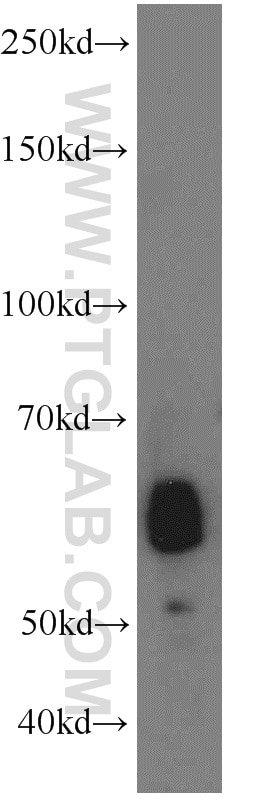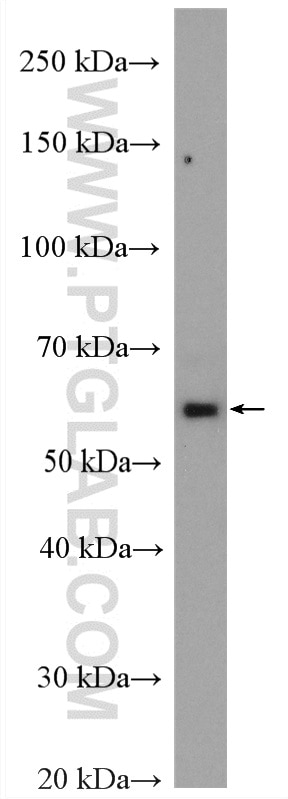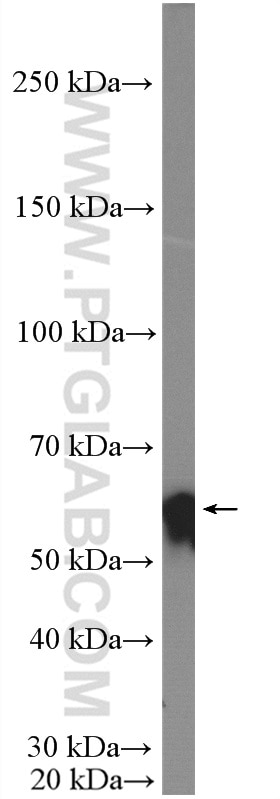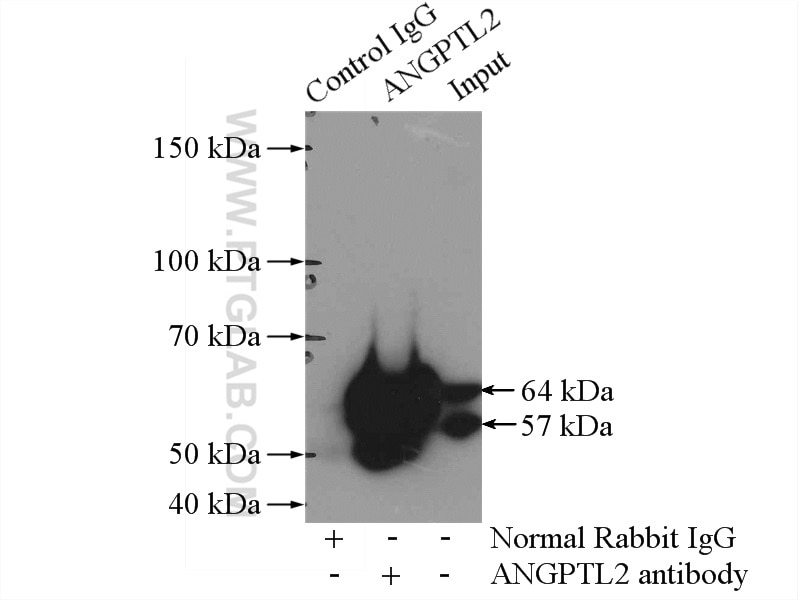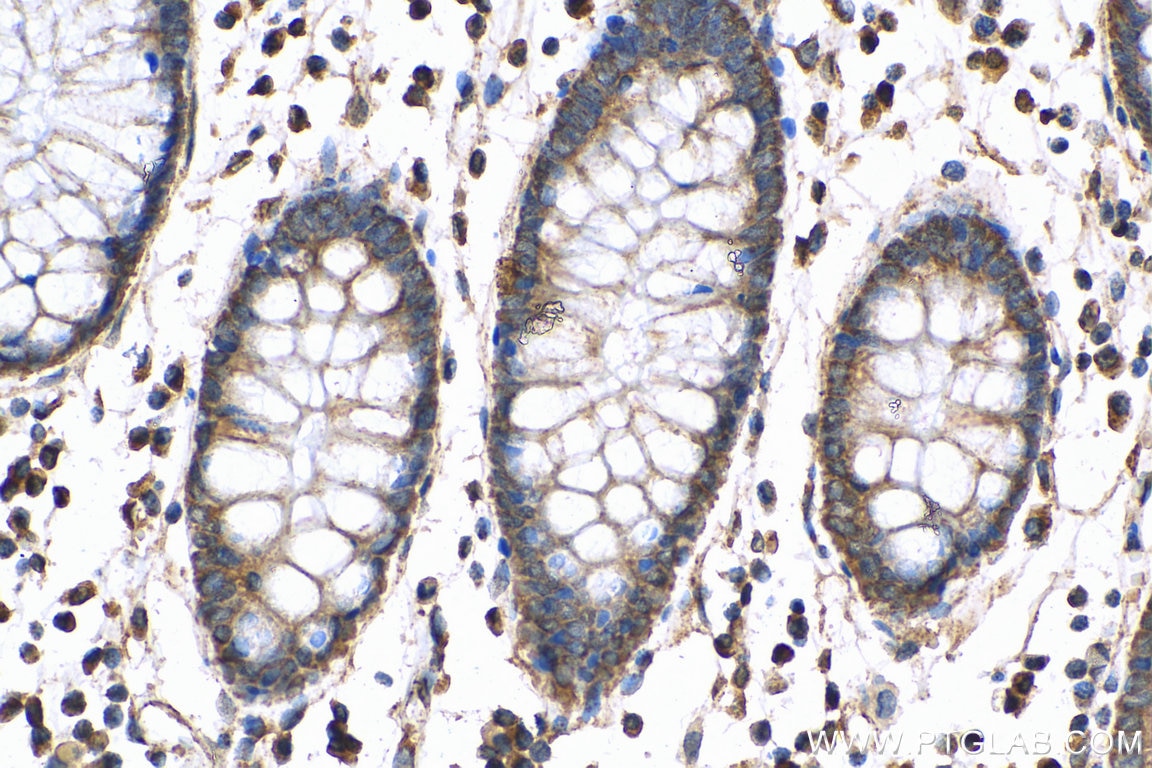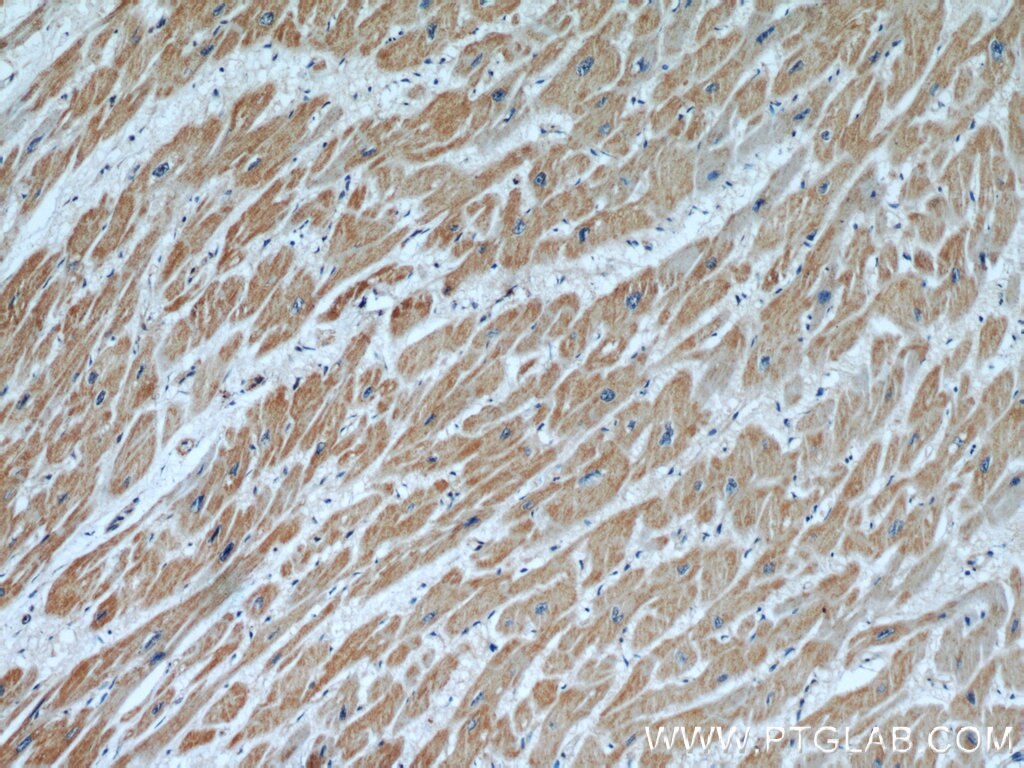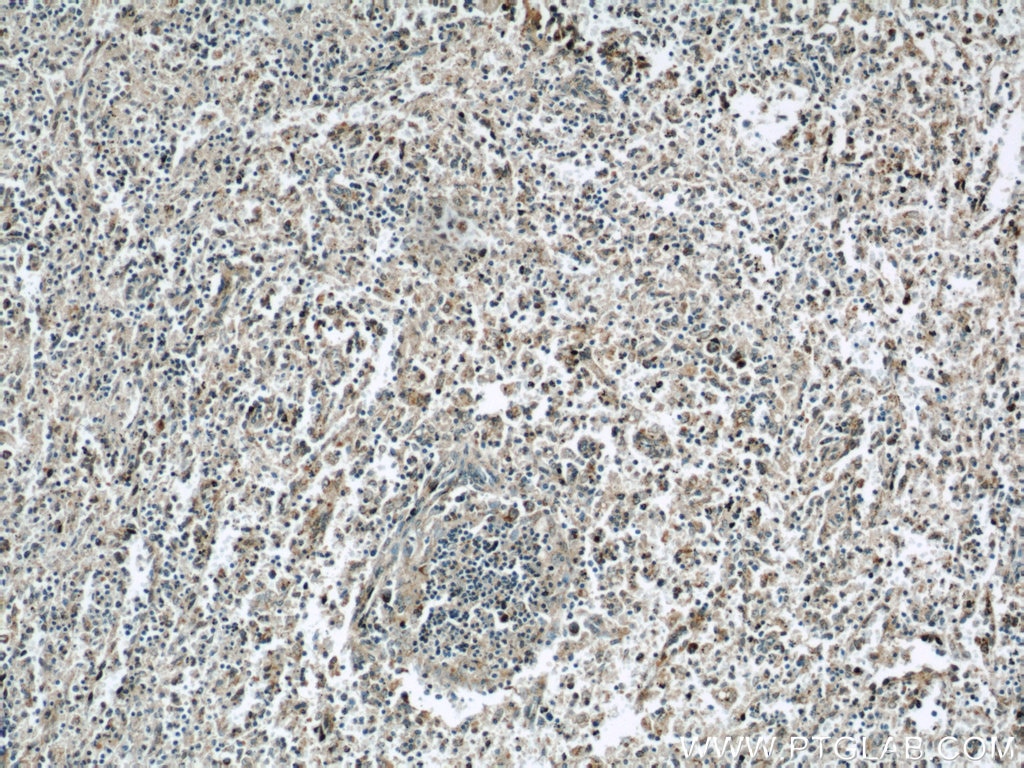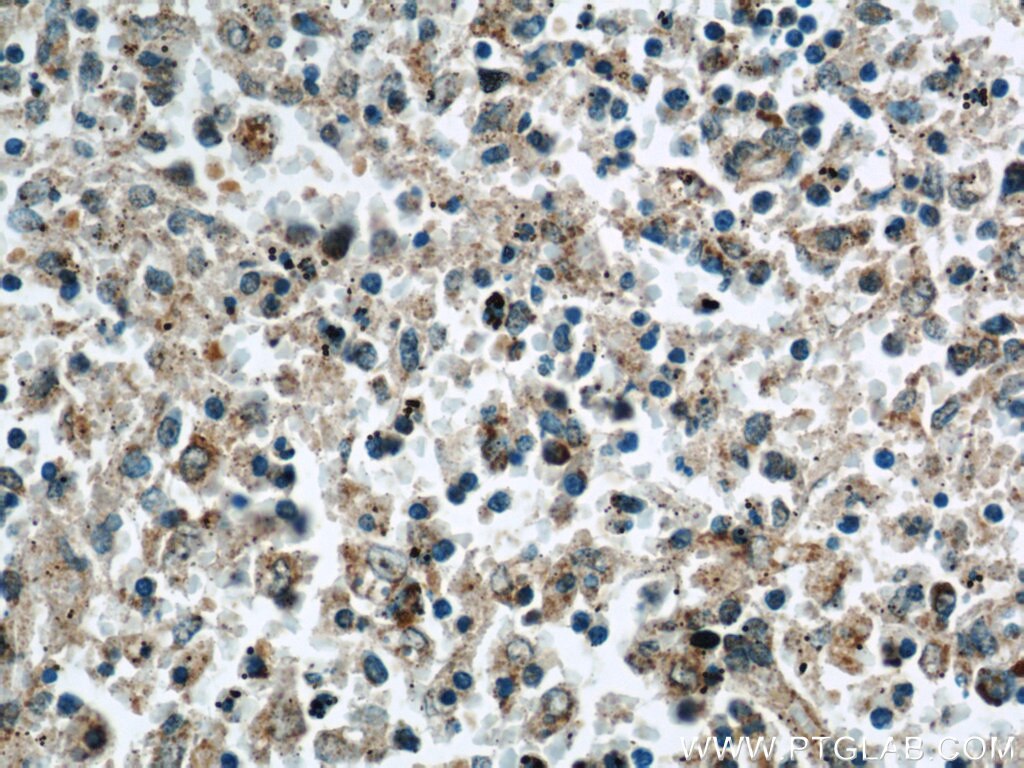- Phare
- Validé par KD/KO
Anticorps Polyclonal de lapin anti-ANGPTL2
ANGPTL2 Polyclonal Antibody for WB, IP, IHC, ELISA
Hôte / Isotype
Lapin / IgG
Réactivité testée
Humain, souris et plus (1)
Applications
WB, IHC, IF, IP, ELISA
Conjugaison
Non conjugué
N° de cat : 12316-1-AP
Synonymes
Galerie de données de validation
Applications testées
| Résultats positifs en WB | tissu cardiaque de souris, cellules 3T3-L1, tissu d'intestin grêle de souris, tissu splénique de souris, tissu testiculaire de souris |
| Résultats positifs en IP | tissu testiculaire de souris |
| Résultats positifs en IHC | tissu de cancer du côlon humain, tissu cardiaque humain, tissu splénique humain il est suggéré de démasquer l'antigène avec un tampon de TE buffer pH 9.0; (*) À défaut, 'le démasquage de l'antigène peut être 'effectué avec un tampon citrate pH 6,0. |
Dilution recommandée
| Application | Dilution |
|---|---|
| Western Blot (WB) | WB : 1:1000-1:4000 |
| Immunoprécipitation (IP) | IP : 0.5-4.0 ug for 1.0-3.0 mg of total protein lysate |
| Immunohistochimie (IHC) | IHC : 1:50-1:500 |
| It is recommended that this reagent should be titrated in each testing system to obtain optimal results. | |
| Sample-dependent, check data in validation data gallery | |
Applications publiées
| KD/KO | See 3 publications below |
| WB | See 10 publications below |
| IHC | See 8 publications below |
| IF | See 2 publications below |
Informations sur le produit
12316-1-AP cible ANGPTL2 dans les applications de WB, IHC, IF, IP, ELISA et montre une réactivité avec des échantillons Humain, souris
| Réactivité | Humain, souris |
| Réactivité citée | rat, Humain, souris |
| Hôte / Isotype | Lapin / IgG |
| Clonalité | Polyclonal |
| Type | Anticorps |
| Immunogène | ANGPTL2 Protéine recombinante Ag2969 |
| Nom complet | angiopoietin-like 2 |
| Masse moléculaire calculée | 493 aa, 57 kDa |
| Poids moléculaire observé | 57-64 kDa |
| Numéro d’acquisition GenBank | BC012368 |
| Symbole du gène | ANGPTL2 |
| Identification du gène (NCBI) | 23452 |
| Conjugaison | Non conjugué |
| Forme | Liquide |
| Méthode de purification | Purification par affinité contre l'antigène |
| Tampon de stockage | PBS with 0.02% sodium azide and 50% glycerol |
| Conditions de stockage | Stocker à -20°C. Stable pendant un an après l'expédition. L'aliquotage n'est pas nécessaire pour le stockage à -20oC Les 20ul contiennent 0,1% de BSA. |
Informations générales
ANGPTL2 (angiopoietin-like 2), a member of the Angptl protein family, is predominantly secreted from adipose tissue and the heart. ANGPTL2 consists of an N-terminus with a conserved coiled-coil domain, two glycosylation sites and a C-terminus with a conserved fibrinogen-like domain. It is a key adipocyte-derived inflammatory mediator that links obesity to systemic INS resistance. ANGPTL2 may play an important role in the pathogenesis of diabetic glomerulopathy.
Protocole
| Product Specific Protocols | |
|---|---|
| WB protocol for ANGPTL2 antibody 12316-1-AP | Download protocol |
| IHC protocol for ANGPTL2 antibody 12316-1-AP | Download protocol |
| IP protocol for ANGPTL2 antibody 12316-1-AP | Download protocol |
| Standard Protocols | |
|---|---|
| Click here to view our Standard Protocols |
Publications
| Species | Application | Title |
|---|---|---|
ACS Nano Oxidation of Reduced Graphene Oxide via Cellular Redox Signaling Modulates Actin-Mediated Neurotransmission. | ||
World J Gastroenterol Leukocyte immunoglobulin-like receptor B2 overexpression as a promising therapeutic target and noninvasive screening biomarker for colorectal cancer | ||
Biomolecules Identification of a Fibroblast-Related Prognostic Model in Glioma Based on Bioinformatics Methods | ||
Sci Rep PET-CT and RNA sequencing reveal novel targets for acupuncture-induced lowering of blood pressure in spontaneously hypertensive rats. | ||
J Periodontol Angiopoietin-like protein 2 deficiency promotes periodontal inflammation and alveolar bone loss. | ||
PLoS One Angiopoietin-like protein 2 regulates Porphyromonas gingivalis lipopolysaccharide-induced inflammatory response in human gingival epithelial cells.
|
